Welcome to one of the most active flamenco sites on the Internet. Guests can read most posts but if you want to participate click here to register.
This site is dedicated to the memory of Paco de Lucía, Ron Mitchell, Guy Williams, Linda Elvira, Philip John Lee, Craig Eros, Ben Woods, David Serva and Tom Blackshear who went ahead of us.
We receive 12,200 visitors a month from 200 countries and 1.7 million page impressions a year. To advertise on this site please contact us.
|

|
|
Fret buzz or fretting out, how much is too much?
|
You are logged in as Guest
|
|
Users viewing this topic: none
|
|
Login  | |
|
Guest

|
 Fret buzz or fretting out, how much ... Fret buzz or fretting out, how much ...
|
|
|
Hi
I make classical guitars but really admire flamenco instruments and think the classical guitar should be closer to the flamenco than it is today. What I would like to know is how much buzzing and fretting out is too much on the trebles and basses of a perfectly set flamenco. On a classical any buzzing or fretting out is literally the end of all good things, even if you can fit your head between the string and the fret it would be better than I tiny buzz. I'm joking of course and piking fun at my own community but I feel that there is a lot to be said for the way flamencos play (in the right hands) compared to some classical guitars.
Any advice would be much appreciated.
Hwyl fawr
David
|
|
|
|
REPORT THIS POST AS INAPPROPRIATE |
Date Jun. 8 2021 20:21:23
 |
|
Guest

|
 RE: Fret buzz or fretting out, how m... (in reply to Guest) RE: Fret buzz or fretting out, how m... (in reply to Guest)
|
|
|
Thanks guys so far this is great stuff. I aim for 10-11mm at the bridge myself for classical as I personally notice the tone die on my instruments if it gets any higher. Certainly it sounds harder to set the flamenco than the classical. Though I am surprised at comments saying the action is the same, I always assumed it was lower, I myself shoot for just over 3mm at the bass and 2.5-3mm at the treble. I just assumed flamencos were more like 2.5 or less. I have only ever once played a real flamenco (a conde in the €5000-€6000 range) when having lessons. My teacher had a go of my £5000 rozas at the same time. He hated mine and I hated his lol. I did not know then the possibilities of a flamenco guitar in the right hands and in my weak classical hands it sounded awful. Still it inspired me to play more robustly so maybe I could do a better job today. It sounded too woody and dry in his hands (he was an amazing player achieving exactly what he was trying to achieve and I was in awe of his talent). It did buzz a fair bit but I recall no fretting out of the trebles, just that they were strong and then gone. I remember it feeling very easy to play compared to my classical.
Do you guys ever remove more material of the frets after the 10th or 12th fret (I think it's called sloping off) after leveling to get rid of fretting out with very low action?
Thanks guys, your helps great so far, can't wait to bleed you all dry of your knowledge lol
Hwyl
David
|
|
|
|
REPORT THIS POST AS INAPPROPRIATE |
Date Jun. 9 2021 8:44:00
 |
|

   
RobF
Posts: 1611
Joined: Aug. 24 2017

|
 RE: Fret buzz or fretting out, how m... (in reply to Guest) RE: Fret buzz or fretting out, how m... (in reply to Guest)
|
|
|
Stephen summed it up pretty nicely when he said “ The action varies with each player and according to how the guitar expresses its string tension. The only constant is the string height at the bridge.” There is a lot of important information buried in those two sentences.
While I would caution against getting too caught up in the numbers game, some starting points for the maker to use for a new guitar could be a string height of between 7.5 - 8.5mm at the bridge and the guitar should be able to play cleanly when not being pushed with an action of between 2.8 - 3.0mm bass and 2.6 - 2.8mm treble. Again, these are dimensions for the maker, which will not always align with the aspirations of all players. But the maker has to deal with realities, and if you can hit those targets then you’re probably in good shape.
In the world of the internet not all makers or shops will make the same claims and the numbers I mentioned shouldn’t be taken as a golden rule or anything like that but, just as those two sentences of Stephen’s hold far more information than they may appear to contain at first glance, so does the assertion that the maker has to deal with realities. And marketing and the perceptions fuelled by it often do not.
The sloping off adjustment you refer to for the higher fret area can be achieved during the fretwork but if it’s done while planing the fingerboard it’s often called dropping the tongue. And, yes, this can be done, it’s not a no-no. There’s a bit of an art to it when done on the wood, however, and it might be a good plan to ease into the practice gradually over a number of guitars, if you do choose to go that route.
Finally, I know you’re kidding, but the makers aren’t really here to be bled dry, it’s best to try to achieve a balance where the knowledge transfer is a two way street. People are very generous with information on the Foro, and it’s often hard earned knowledge that’s being imparted. For me, I close the tap if I discover an active discussion is getting cross-posted to or referenced on other forums or platforms. That’s something that really throws me, and I’ll generally stop responding to a poster if I notice that they’re doing that. But others may not care so much, so maybe it’s a non-issue in the grand scheme of things.
|
|
|
|
REPORT THIS POST AS INAPPROPRIATE |
Date Jun. 9 2021 10:46:37
 |
|
Guest

|
 RE: Fret buzz or fretting out, how m... (in reply to RobF) RE: Fret buzz or fretting out, how m... (in reply to RobF)
|
|
|
Thanks for the info it's great really. I will impart as much wisdom as I have earned myself (not much I fear lol) to this forum as well as a good deal of nonsensical rambles. I don't share your view on information cross references with other forums but can't recall a single time I have actually done so, so no worries there I guess?!?!
I am on a journey to make what I think is the ideal Spanish guitar sound. I want to help anyone in anyway I can to achieve their goals in this space also if I can. I will try to post my finding that I feel will help others but I am going to ask more questions than anything else as I am a new maker, not an old maestro like some here. I hope that's ok.
So to share with the group, my latest guitar is a spruce/EIRW classical guitar 650 scale with good separation, a dryer sound than most cassical players would like, a thin bridge string height at bridge 10mm treble - 11mm bass. Bridge weight approx 14g. Design Rodriguez classical. I want a guitar that sound naturally like what vicent amigo sounds like through amplification in this clip https://youtu.be/OM5YG0DYOD4
I believe this is the best sound any Spanish guitar can make classical or flamenco so will aim to make that noise in my guitars but naturally without the artificial reverb added after.
I will continue to take and give advice as I go to try to one day achieve this goal
Hwyl
David
|
|
|
|
REPORT THIS POST AS INAPPROPRIATE |
Date Jun. 9 2021 12:20:07
 |
|

   
RobF
Posts: 1611
Joined: Aug. 24 2017

|
 RE: Fret buzz or fretting out, how m... (in reply to Guest) RE: Fret buzz or fretting out, how m... (in reply to Guest)
|
|
|
Hi David, thanks for identifying your goals, that helps.
One thing I wanted to explore a little more from your post, if you’re willing, is the string height and bridge weight you mention. To me, this suggests that either the wings are fairly thin or there’s an excess of 3mm of bone sticking out above the wood, or both. 14g seems a little light, even for a flamenco guitar that’s pretty light and it’s going to affect the character.
Also, having a lot of bone showing above the bridge is something that seems to have migrated from the steel string world into the classical domain. I’m going to stick my neck out and say it’s probably not a good idea to aim for that with flamenco guitars. It’s better to keep it at less, not only for the sake of structural integrity, but also because having a lot of bone sticking out is aesthetically not very Spanish, and flamenco guitars really are Spanish at their core, which also is one of your goals.
The same applies to thin wings and ultra light bridges, neither are necessarily going to result in a better guitar or somehow make it more flamenco. I’m just cautioning to be careful with that, not saying it shouldn’t be done, but should really only be done with good reasons for the deviations from the norm. There’s no need to reinvent the wheel, the flamenco guitar is essentially a solved problem.
As an aside, the reason I don’t like cross posting is because the participants are no longer involved in an open discussion. It’s kind of like putting someone on speakerphone without telling them or having a conference call without identifying all the parties present. It’s simply not cool.
|
|
|
|
REPORT THIS POST AS INAPPROPRIATE |
Date Jun. 9 2021 13:49:34
 |
|
Guest

|
 RE: Fret buzz or fretting out, how m... (in reply to RobF) RE: Fret buzz or fretting out, how m... (in reply to RobF)
|
|
|
Hi Rob
The bridge has thin wings (3-4mm) but the main reason for the lightness is simply the species I chose to use (black walnut). Its so much lighter than rosewood and is what I personally prefer. I know my geometry for this guitar is very different from a flamenco, given that the dome of the top is around 4mm from flat along with other differences like a neutral neck angle. It sounds great, a nice concert classical but I want to get ever closer to what my ultimate goal is as I explained. I don't think making a flamenco will get me there, nor a classical. So maybe I do need to re invent the wheel a bit lol. My total saddle height is 7mm (6 on the treble) but the carrier is high enough on its front edge for it to only protrude a couple mill above. How tall is a flamenco saddle can I ask? If your going for 8mm above the soundboard at the bridge I would assume a piece of bone 4-5mm high tapering down a bit to the treble side? Assuming there his 3-4mn of bridge between the saddle and soundboard.
Oh my bridge is scewed also lol it's set at an angle with the bass side further back than the treble.
I like to mess with things a bit as you can tell lol
Hwyl fawr butty
David
|
|
|
|
REPORT THIS POST AS INAPPROPRIATE |
Date Jun. 9 2021 17:41:41
 |
|
Guest

|
 RE: Fret buzz or fretting out, how m... (in reply to ernandez R) RE: Fret buzz or fretting out, how m... (in reply to ernandez R)
|
|
|
I love the tuning pegs in your picture, gorgeous!
Thanks for the welcome.
What rob said really got me thinking about ways I can contribute, I have been messing with finishes for a while and have amassed a bit of knowledge on them, enough to have done some experiments and learn some things. I have started to put this info onto the delcamp forum for classical guitars but would love to share it here too with the blessings of everyone. I think it's really interesting and maybe you all will too.
I won't start just yet as I'm recovering from surgery that didn't go so well, but when I'm healthier I will start!
Hwyl fawr butty
David
|
|
|
|
REPORT THIS POST AS INAPPROPRIATE |
Date Jun. 9 2021 23:16:20
 |
|

   
RobF
Posts: 1611
Joined: Aug. 24 2017

|
 RE: Fret buzz or fretting out, how m... (in reply to Guest) RE: Fret buzz or fretting out, how m... (in reply to Guest)
|
|
|
quote:
What rob said really got me thinking about ways I can contribute, I have been messing with finishes for a while and have amassed a bit of knowledge on them, enough to have done some experiments and learn some things...
Well, you’ll hit a bullseye if you want to discuss finish work here, as I have a feeling it’ll generate quite a bit of interest. The topic has been discussed many of times in the past, generally with the focus on French Polish, but there’s plenty of room for more discussion, plenty of room for growth. Your experiences with finish work is definitely a topic I would be interested in.
In reference to your last reply to me, I’ve been racking my brains about how to respond to this all afternoon and come to conclude that, for me at least, it’s premature to dive too deeply into implementation details until we have hashed our way through some of the more philosophical differences.
I truly believe the most pragmatic approach towards achieving the ideal of an archetypical Spanish sound is to start by building a guitar patterned after a proven Spanish template, using traditional materials and dimensions, and then adjusting from there. In other words, if you want a guitar to sound and behave like a traditional flamenco guitar then the best path forward to achieve that goal is to simply build a traditional flamenco guitar. Otherwise, there is a real danger of creating problems where they don’t exist. I realize this may sound pedestrian and perhaps unappealing to a lot of people, but I can’t think of any other way to put it.
There really isn’t any black magic about it. If your ideal is close to what Vicente Amigo gets with his Reyes, which is a flamenco guitar known to have some classical characteristics, then perhaps building a couple of guitars patterned after a Reyes is a good starting point. That will teach an enormous amount and you will undoubtedly acquire knowledge that will be extremely helpful to you in the pursuit of your ideal. It will also be a good springboard for discussions on the Foro, a great springboard, actually. Otherwise, I fear you may be taking an unnecessarily hard road, but not necessarily a lonely one, as you’ll have a friend in Ernandez (the King of the road less travelled), and the rest of us won’t leave you in the lurch, either, so that’s not a concern.
|
|
|
|
REPORT THIS POST AS INAPPROPRIATE |
Date Jun. 10 2021 0:19:35
 |
|
Guest

|
 RE: Fret buzz or fretting out, how m... (in reply to Guest) RE: Fret buzz or fretting out, how m... (in reply to Guest)
|
|
|
Hey guys
What a welcoming forum this is, I love it already! When I can work out how to reduce file sizes for my pics I will post loads up. Until then I will begin a varnish thread (without pics).
Hwyl boyos
David
|
|
|
|
REPORT THIS POST AS INAPPROPRIATE |
Date Jun. 10 2021 8:43:48
 |
|

   
Ricardo
Posts: 14801
Joined: Dec. 14 2004
From: Washington DC

|
 RE: Fret buzz or fretting out, how m... (in reply to Guest) RE: Fret buzz or fretting out, how m... (in reply to Guest)
|
|
|
A lot of great responses you already got. But just to add from a player perspective, this pre-conception that flamenco=low action vs classical guitar is funny to me. When I describe the situation to classical builders, and even better if I have my goldilocks guitar with me, they are always quite surprised. The buzzing is a result of playing technique only. I can make the highest ever action classical buzz and snap like a banjo if I want. And the lowest snappy fretting out guitar sing with a sweet tone. It is about how you attack the strings with the right hand. On the left hand side, when things get moving fast, a high action over the finger board can be a problem if you can’t push the strings down fast enough…it gets dirty sounding.
So the goldilocks set up has to do with the neck angle. 7mm at bridge 3mm or higher at 12 on bass side. Trebles can be lower of course, but if the neck angle is good for flamenco, I can deal with a guitar that has 4mm or 2 mm at 12th as I described earlier, via the technique. A bridge of 9mm or higher starts to get uncomfortable for right hand techniques of strumming mainly. Arpegio and picado are not affected by the bridge height, although the lower than 7mm set ups will result in nails taping the top during hard picado. Again, planting picados a little higher can fix that problem, so technique again.
The main point about set up is you want to have a tiny bit of bone saddle to lower if necessary to taste, and raising it should not take us to the 9mm range. Players that do more rhythm work only (accompaniment) are fine with lower 12 fret set up, where as players that do more solo work need a stiffer higher set up in general, because we need some snap and buzz for strumming chords, but dynamic range for single note lines. So yes, flamenco set up is way more complex issue than standard classical set up.
And just to add a couple things…the flamenco guitar will be quieter than your equivalent classical BECAUSE the lower bridge set up. In otherwords, raising the action always makes a guitar project more sound. So don’t be concerned about volume. My favorite flamenco guitars are not loud but have perfect balance in the mid range. Loud guitars tend to simply be bass heavy in my experience. And last, don’t go for the “Reyes sound” because other players use Reyes and DON’T sound like Vicente. That is in the fingers amigo.
_____________________________
CD's and transcriptions available here:
www.ricardomarlow.com
|
|
|
|
REPORT THIS POST AS INAPPROPRIATE |
Date Jun. 10 2021 16:18:48
 |
|
Guest

|
 RE: Fret buzz or fretting out, how m... (in reply to Ricardo) RE: Fret buzz or fretting out, how m... (in reply to Ricardo)
|
|
|
Hi
As a player, do you ever amplify and if so would you use reverb like Vicente? What I'd like to make is a guitar that naturally sounds like that without the added reverb. I have no issue with the saddle being lower to help the rhythm playing but it's the single note playing I'm most concerned with. I get what you are saying about the player making the sound more than the guitar as this was displayed to me on meeting a real professional flamenco player, but this is not the case in the classical world. They seem to disregard their own input into the sound coming out of the guitar a lot more quickly. I recently showed one of my guitars to a teacher of 40 years who was quick to explain to me that though the guitar sounded beautiful in my hands, the fact that it did not sound as good in his made it essentially a bad guitar. In other words if it doesn't sound good to them it couldn't possibly be their fault lol. Its a shame they think this way but I can understand, it's a pride thing. A lot of classical players (myself included) get the idea that we are better players than we really are. It hurts to then find out that we aren't actually that good after all as I found out for myself after playing for 20 years and thinking I was awesome to realising that next to a flamenco player with similar experience I knew nothing. It hurt like hell but what a wake-up call it was. I now understand that you have to really drive a guitar and work on making it sound the way you want it to and not just play the notes to Asturias and think your the best. I wish more players (like that 40 year teacher) could have the same experience.
I now don't care about the people who would pick up one of my guitars and dismiss it because it doesn't give the infant gratification of a smallman or the latest double top. Instead I make for those who understand that you might have to work for more for your sound, but what a reward you get at the end.
Anyway ramble over, I'd love any more input you have that could help me make good guitars and will share any experience I have as a player or maker too.
Hwyl fawr
David
|
|
|
|
REPORT THIS POST AS INAPPROPRIATE |
Date Jun. 10 2021 17:17:13
 |
|

   
estebanana
Posts: 9351
Joined: Oct. 16 2009

|
 RE: Fret buzz or fretting out, how m... (in reply to johnparchem) RE: Fret buzz or fretting out, how m... (in reply to johnparchem)
|
|
|
quote:
On my classical guitars I go to great lengths to keep the string energy in the top; stiff sides, solid top linings and a good size Spanish slipper for the neck attachment. On the flamencos I build I do the opposite. Thinner sides, thinner top and back, spaced individual peones for the top attachment and smaller Spanish foot. There is a clear noticeable difference in the weight, even though my classical and flamenco guitars are the same size. These changes from the classical combined with a lower string height off the top make a balanced, clearly articulated sound with much less sustain. I am looking for the punch of a pluck and then I want the sound to bleed off the top; thus the lower impedance from the top to the sides and rest of the guitar.
You got it it’s exactly this. You build a stiff classical guitar then you deconstruct it enough to be a flamenco guitar. Which then makes it a classical guitar from another era.
But it’s this, flamenco and classical guitars are the same thing, only today classical guitars have been optimized to emphasize a different sound envelope. The important thing is not letting the ribs and back get so stiff that they don’t move with the top. A lot of character in the tone comes from blending all the surfaces together.
And the one techie thing to look for is a good cross -di pole emphasis with a main air resonance between F and G - F# is generally pretty nice, but getting up near A no so much. Although is you build traditional in the Andaluz way that seems to happen naturally because over time they just hit on this zone.
I never worried much about any of that and only in the last few years tested my guitars to see if they fit that mode profile.
One important thing is scale, although you can make wonderful flamenco guitars with shorter scales ( David Serva’s guitar is 448 mm the one I made him) longer scales are in my opinion better. For a lot of reasons. Go 660 or go home. 😂
_____________________________
https://www.stephenfaulkguitars.com
|
|
|
|
REPORT THIS POST AS INAPPROPRIATE |
Date Jun. 11 2021 3:33:30
 |
|
Guest

|
 RE: Fret buzz or fretting out, how m... (in reply to Ricardo) RE: Fret buzz or fretting out, how m... (in reply to Ricardo)
|
|
|
Hi Ricardo,
I get you. I've experienced this for myself playing a pretty dry classical without much sustain (for a classical) in a huge church and found the sound so muddy that everything just sounded a mess unless I played slow pieces. That's when I started to look for a different sound. I stopped lusting after the classical with never ending sustain and started looking for a more flamenco sound but still classical. I might be chasing a unicorn 🦄 but what I want is a guitar that sounds nice in a room or a cathedral wether I play fast or slow. I realize that vicentes guitar may not be the best to play Brahms in my living room, and likewise a dammann guitar may not be great for playing something really fast in a cathedral. What I hope to achieve is something of a compromise. I believe Miguel Rodriguez design might be the way to go but tell me do you believe you could play flamenco on one of his guitars?
Here is one I particularly live the sound of, it does have sustain but also separation and attack (to my ear) but tell me what do you think? https://youtu.be/9aZYoSlCcak
Hwyl fawr butty
David
|
|
|
|
REPORT THIS POST AS INAPPROPRIATE |
Date Jun. 13 2021 17:49:17
 |
|
Guest

|
 RE: Fret buzz or fretting out, how m... (in reply to Ricardo) RE: Fret buzz or fretting out, how m... (in reply to Ricardo)
|
|
|
Beautiful butty,
I didn't know that about Miguel Rodriguez, the plans I use have a big diagonal brace which was why I wondered if it would work as a flamenco. I had the misconception that flamencos were always fan braced, so the Hauser makes sense to me despite the top and bridge being a bit thick.
You have opened my eyes for sure
Diolch
David
|
|
|
|
REPORT THIS POST AS INAPPROPRIATE |
Date Jun. 13 2021 18:48:55
 |
|
 New Messages New Messages |
 No New Messages No New Messages |
 Hot Topic w/ New Messages Hot Topic w/ New Messages |
 Hot Topic w/o New Messages Hot Topic w/o New Messages |
 Locked w/ New Messages Locked w/ New Messages |
 Locked w/o New Messages Locked w/o New Messages |
|
 Post New Thread
Post New Thread
 Reply to Message
Reply to Message
 Post New Poll
Post New Poll
 Submit Vote
Submit Vote
 Delete My Own Post
Delete My Own Post
 Delete My Own Thread
Delete My Own Thread
 Rate Posts
Rate Posts
|
|
|
Forum Software powered by ASP Playground Advanced Edition 2.0.5
Copyright © 2000 - 2003 ASPPlayground.NET |
0.078125 secs.
|


 Printable Version
Printable Version




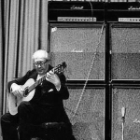

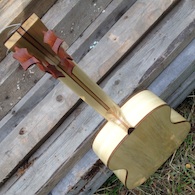
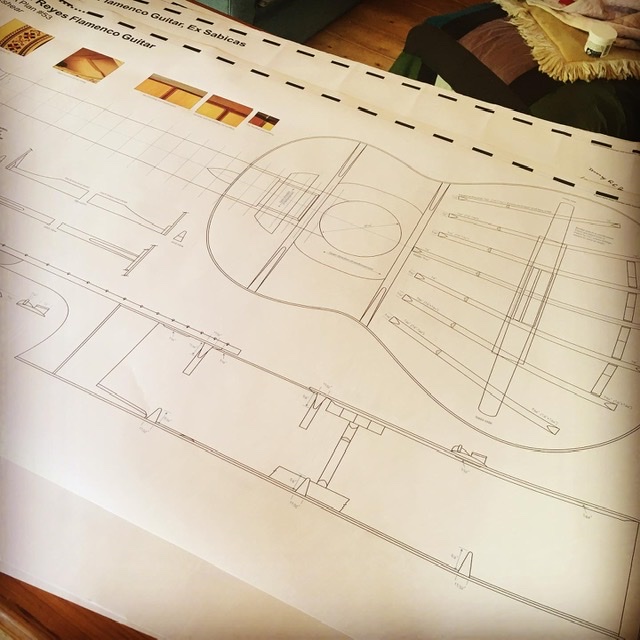
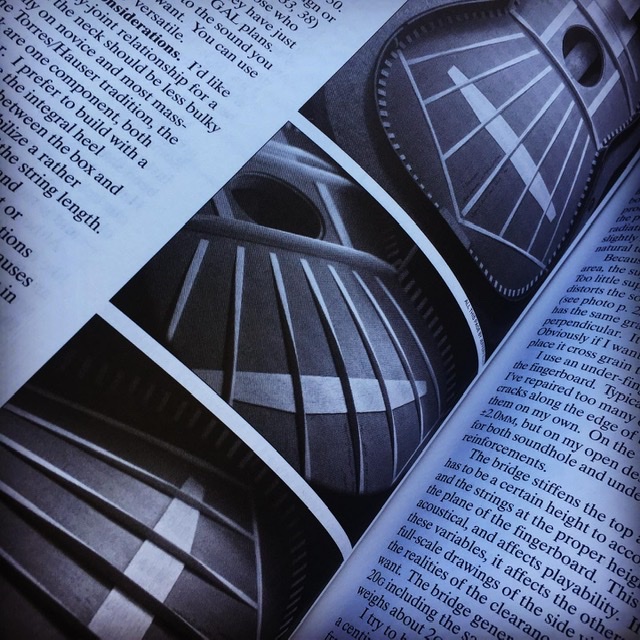
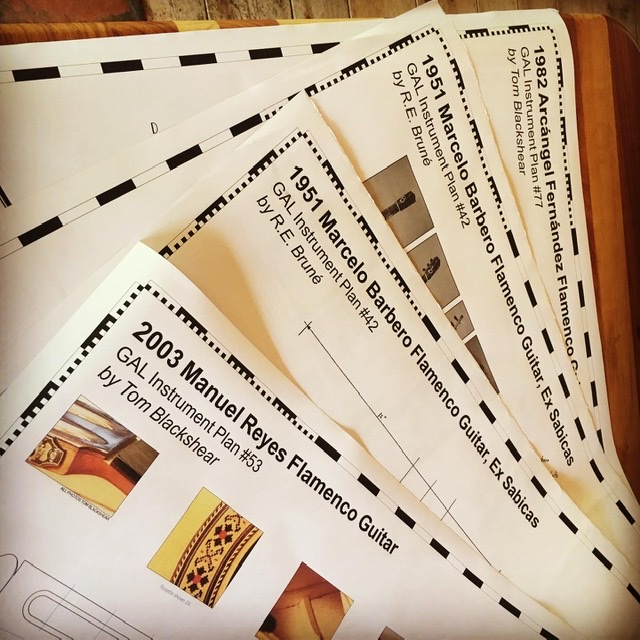
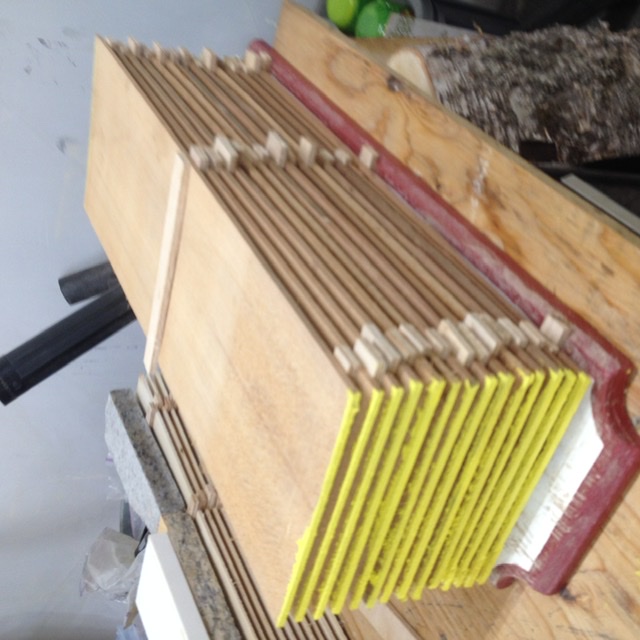



 New Messages
New Messages No New Messages
No New Messages Hot Topic w/ New Messages
Hot Topic w/ New Messages Hot Topic w/o New Messages
Hot Topic w/o New Messages Locked w/ New Messages
Locked w/ New Messages Locked w/o New Messages
Locked w/o New Messages Post New Thread
Post New Thread